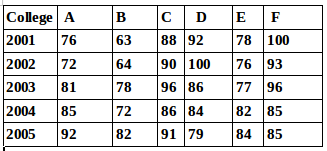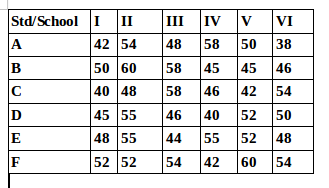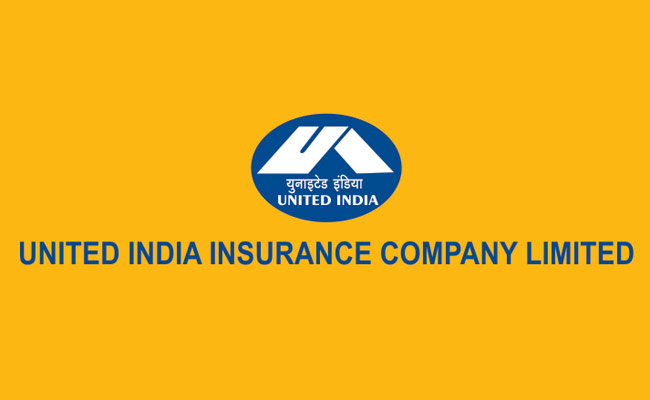Data Interpretation For SBI PO : Set – 56
Data Interpretation For SBI PO : Set – 56
D.1-5) Study the table carefully to answer the questions that follow.
Percentage of Students Passing out of six different Colleges in Five years

1) If the number of students studying in College B in the year 2005 was 3650, what was the number of students failing from that college in that year?
a) 594
b) 657
c) 583
d) 625
e) None of these
2) What is the ratio of the number of students passing to those failing from college E in the year 2002 ?
a) 6:5
b) 18:7
c) 19:6
d) Can’t be determined
e) None of these
3) If the numbers of students studying in Colleges E and F in the year 2003 were 2800 and 2250 respectively, what was the ratio of the number of students passing out of College E to that out of College F in that year?
a) 216:217
b) 327:341
c) 423:485
d) 539:540
e) None of these
4) The average Percentage of Passing is highest for which College?
a) 216:217
b) 327:341
c) 423:485
d) 539:540
e) None of these
5) What is the percent increase in percentage of students passing out of college A in the year 2005 from the previous year? (Rounded off two digits after decimal)
a) 7.61
b) 8.24
c) 6.36
d) 8.05
e) None of these
D.6-10) Study the table carefully to answer the questions that follow.
Number of students studying in different standards of six different schools

6) What is the approximate average number of students studying in Standard I from all schools together?
a) 38
b) 50
c) 40
d) 43
e) 46
7) Number of students in standard IV from school E is What percent of those studying in standard IV from School D?
a) 128
b) 132.5
c) 124
d) 137.5
e) None of these
8) Which Standard has the lowest total number of students from all the given schools together?
a) V
b) VI
C) I
d) IV
e) None of these
9) Which School has the highest total number of students from all the given standards together?
a) E
b) F
c) B
d) A
e) None of these
10) what is the respective ratio of students studying in Standard III of schools A and B together to those studying in Standard VI of schools C and D together?
a) 53:52
b) 43:47
c) 25:27
d) 39:38
e) None of these



